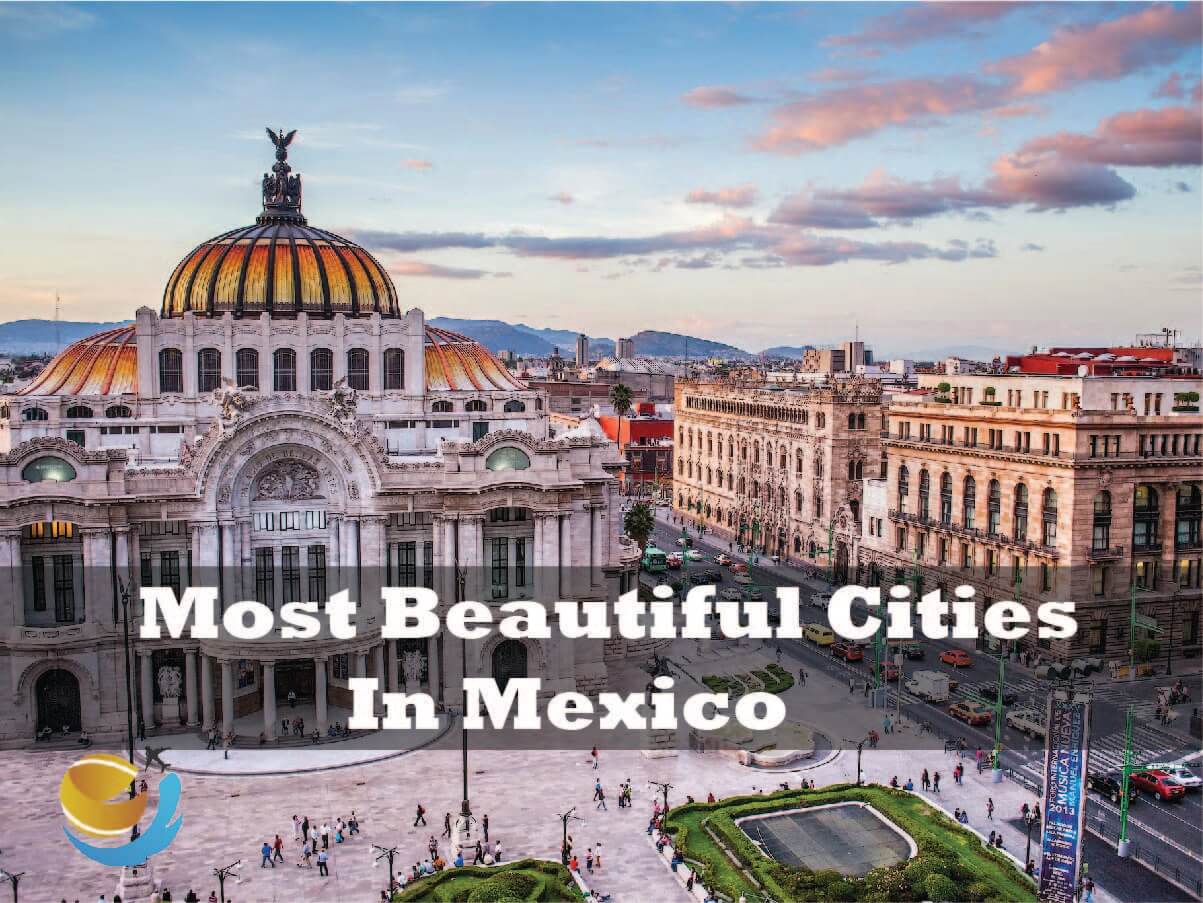Introduction:
Mexico is one of the most beautiful States, in this guide we will uncover the top 8 Most Beautiful cities in Mexico. So be ready to explore these cities. Mexico, a country known for its vibrant culture, rich history, and breathtaking landscapes, is home to some of the most beautiful cities in the world.
Each city boasts its unique charm, blending historical heritage with modern vibrancy, making them must-visit destinations for travellers. From the bustling streets of Mexico City to the colonial elegance of San Miguel de Allende, these cities offer a diverse array of experiences that captivate the hearts of visitors.
In this article, we will take you on a journey through some of the most beautiful cities in Mexico, each renowned for its distinctive architecture, cultural significance, and stunning natural surroundings. Whether you are drawn to the artistic communities, historic landmarks, or culinary delights, these cities promise an unforgettable experience.
Join us as we explore the enchanting cities of Mexico, where every corner tells a story and every street exudes beauty.
Table of Contents
Most Beautiful Cities In Mexico
1. Mexico City
Historical Significance
Mexico City, the capital of Mexico, is a vibrant metropolis with a rich tapestry of history that spans thousands of years. Founded by the Aztecs as Tenochtitlán in 1325, it became the heart of their powerful empire. Following the Spanish conquest in the 16th century, the city was transformed into the centrepiece of New Spain.
Today, Mexico City is a fascinating blend of ancient ruins, colonial architecture, and modern skyscrapers, reflecting its complex and layered history.
Major Attractions
Mexico City is home to some of the country’s most iconic landmarks:
- Zócalo: The main square, officially known as Plaza de la Constitución, is one of the largest city squares in the world. Historic buildings, including the Metropolitan Cathedral and the National Palace, surround it.
- Chapultepec Park: One of the largest city parks in the Western Hemisphere, Chapultepec offers a serene escape from the city’s hustle and bustle. It houses the Chapultepec Castle, several museums, a zoo, and numerous recreational areas.
- National Museum of Anthropology: This world-renowned museum showcases an extensive collection of pre-Columbian artifacts, providing deep insights into Mexico’s indigenous cultures and history.
Cultural Scene
Mexico City’s cultural vibrancy is unmatched, with a thriving arts scene that encompasses music, dance, literature, and cuisine.
- Bellas Artes: The Palacio de Bellas Artes is an architectural masterpiece that hosts performances ranging from ballet to opera, as well as visual art exhibitions.
- Culinary Scene: The city’s culinary offerings are diverse and innovative, from street food delights like tacos and tamales to upscale dining experiences at world-renowned restaurants such as Pujol and Quintonil.
- Nightlife and Festivals: Mexico City’s nightlife is dynamic, with a wide range of bars, clubs, and live music venues. The city also hosts numerous festivals throughout the year, including the vibrant Día de los Muertos (Day of the Dead) celebrations and the internationally acclaimed Zona Maco art fair.
Mexico City’s unique blend of historical significance, major attractions, and cultural richness makes it a compelling destination for travelers seeking to experience the essence of Mexico.
2. San Miguel de Allende
Colonial Charm
San Miguel de Allende, located in the central highlands of Mexico, is renowned for its well-preserved colonial architecture and picturesque cobblestone streets. Founded in the 16th century, the city boasts a timeless beauty that has earned it recognition as a UNESCO World Heritage Site.
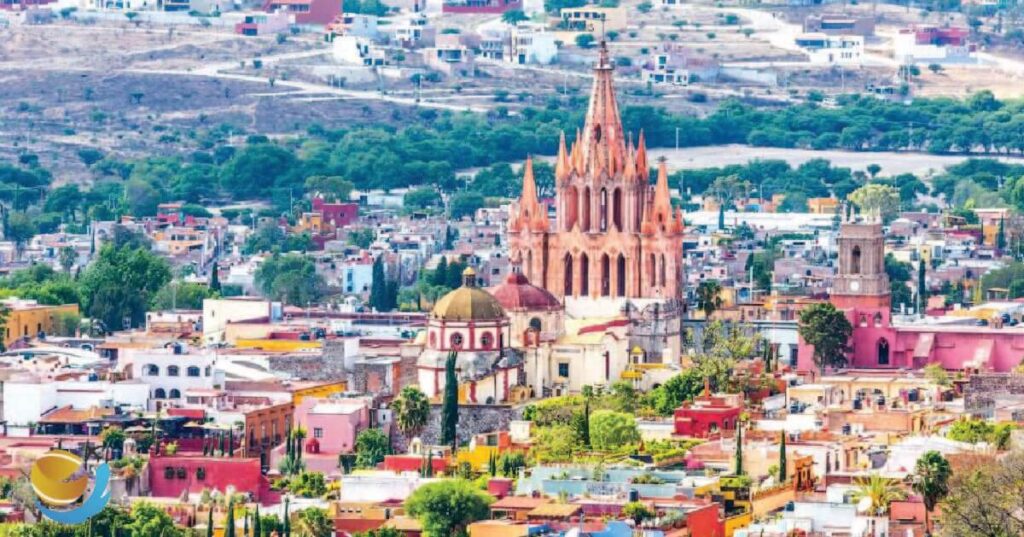
The pastel-coloured buildings, ornate facades, and charming plazas create a captivating atmosphere that transports visitors back in time.
Artistic Community
San Miguel de Allende has long been a haven for artists, attracting creatives from around the world. The city is dotted with numerous galleries, studios, and workshops, where visitors can explore a wide range of artistic expressions:
- Instituto Allende: This renowned art school has been a cornerstone of the local art scene since the 1950s, offering classes and exhibitions that draw international artists and students.
- Fábrica La Aurora: A former textile factory transformed into a thriving arts and design center, Fábrica La Aurora houses galleries, studios, and shops showcasing contemporary and traditional art, furniture, and antiques.
- Public Art and Murals: Throughout the city, public art installations and murals add a vibrant touch to the already colorful streets.
Festivals and Events
San Miguel de Allende is a city that loves to celebrate, with a calendar full of lively festivals and events that reflect its rich cultural heritage:
- San Miguel Writers’ Conference: This annual event attracts writers, readers, and literary enthusiasts from around the world for a week of workshops, lectures, and readings.
- Day of the Dead: The city’s Día de los Muertos celebrations are particularly elaborate, featuring parades, altars, and festivities that honor departed loved ones.
- Fiesta de San Miguel Arcángel: Celebrating the city’s patron saint, this festival includes religious processions, fireworks, and traditional dances, bringing the entire community together in a vibrant display of faith and culture.
San Miguel de Allende’s combination of colonial charm, a thriving artistic community, and a rich tapestry of festivals and events makes it one of Mexico’s most enchanting and culturally vibrant cities. Visitors are drawn to its beauty, creativity, and the warm, welcoming spirit of its residents.
3. Guanajuato
Colorful Architecture
Guanajuato, nestled in the mountains of central Mexico, is a city renowned for its striking and colorful architecture. The cityscape is characterized by a maze of narrow, winding alleyways and steep staircases, with brightly painted houses cascading down the hillsides.
The vibrant hues of the buildings, combined with the cobblestone streets and charming plazas, create a picturesque and enchanting atmosphere.
Historical Context
Guanajuato played a pivotal role in Mexico’s history, particularly during the Mexican War of Independence:
- Alhóndiga de Granaditas: This historic granary turned fortress was the site of a significant battle in the early days of the independence movement. Today, it serves as a museum dedicated to the history of the city and the struggle for independence.
- Monumento al Pípila: Overlooking the city, this monument honors Juan José de los Reyes Martínez, known as El Pípila, who is celebrated for his heroic actions during the siege of the Alhóndiga de Granaditas.
- Historic Mines: Guanajuato’s wealth and development were largely driven by its silver mines, which were some of the most productive in the world during the colonial era. Visitors can explore the old mines and learn about their historical significance.
Unique Attractions
Guanajuato is home to a variety of unique attractions that reflect its rich cultural heritage and quirky charm:
- Mummy Museum: The Museo de las Momias is one of the city’s most unusual and famous attractions. It houses a collection of naturally mummified bodies discovered in the local cemetery, offering a fascinating, if eerie, glimpse into the past.
- Callejón del Beso: This narrow alleyway, where the balconies of opposite houses nearly touch, is steeped in legend. It is said that couples who kiss on the third step will enjoy seven years of happiness.
- Cervantino Festival: Named after Miguel de Cervantes, the author of Don Quixote, this annual festival is one of the most important cultural events in Latin America. It features a diverse array of performances, including theater, music, dance, and visual arts, attracting artists and audiences from around the world.
Guanajuato’s colorful architecture, rich historical context, and unique attractions make it a captivating destination for travelers seeking to explore Mexico’s cultural and historical depth. The city’s vibrant atmosphere and scenic beauty leave a lasting impression on all who visit.
4. Oaxaca
Cultural Richness
Oaxaca, located in southwestern Mexico, is celebrated for its deep cultural roots and vibrant traditions. The city is a melting pot of indigenous cultures, particularly the Zapotec and Mixtec, whose influences are evident in its art, cuisine, and festivals.
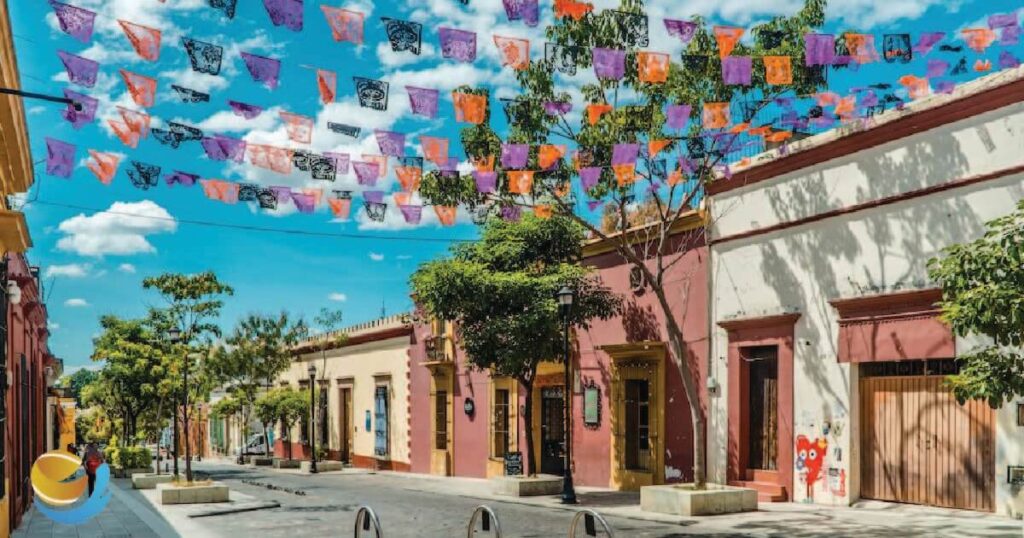
The rich cultural tapestry of Oaxaca is a testament to its long and varied history, from ancient civilizations to Spanish colonial rule.
Culinary Delights
Oaxaca is often referred to as the culinary capital of Mexico, renowned for its distinctive and flavorful cuisine:
- Mole: Oaxaca is famous for its mole, a complex and rich sauce made from a blend of ingredients like chiles, spices, chocolate, and nuts. There are several varieties, with mole negro being one of the most celebrated.
- Tlayudas: Often called Oaxacan pizza, tlayudas are large, thin, crispy tortillas topped with refried beans, cheese, lettuce, avocado, meat, and salsa.
- Mezcal: This traditional distilled spirit, made from the agave plant, is a cultural and culinary staple in Oaxaca. Visitors can tour mezcal distilleries and sample different varieties to appreciate its unique flavors.
Historical Sites
Oaxaca is home to numerous historical and archaeological sites that provide a window into its ancient and colonial past:
- Monte Albán: This ancient Zapotec city, perched on a hilltop overlooking the Oaxaca Valley, is one of the most important archaeological sites in Mexico. Its impressive ruins include pyramids, temples, and ball courts.
- Santo Domingo de Guzmán Church: This stunning Baroque church and former monastery, adorned with intricate gold leaf interior decorations, is a masterpiece of colonial architecture. It also houses the Museo de las Culturas de Oaxaca, which showcases the region’s rich history and cultural heritage.
- Hierve el Agua: A natural wonder located outside the city, Hierve el Agua features petrified waterfalls and mineral-rich springs. The site offers breathtaking views and is a testament to the region’s geological and natural beauty.
Festivals and Traditions
Oaxaca is known for its vibrant festivals, which are deeply rooted in indigenous and Catholic traditions:
- Guelaguetza: One of the most important cultural events in Oaxaca, this annual festival celebrates the region’s indigenous cultures with traditional music, dance, and costumes. It is a vibrant display of community and cultural pride.
- Day of the Dead: Oaxaca’s Día de los Muertos celebrations are among the most elaborate and colorful in Mexico. The city comes alive with altars, parades, and markets, as families honor their deceased loved ones with offerings and festivities.
- Night of the Radishes: This unique event, held on December 23rd, features intricately carved radishes depicting scenes from Oaxacan folklore, history, and religion. It is a testament to the city’s creativity and community spirit.
Oaxaca’s cultural richness, culinary delights, historical sites, and vibrant festivals make it a must-visit destination for anyone looking to experience the heart and soul of Mexico. Its unique blend of tradition and innovation offers an unforgettable journey through one of the country’s most enchanting regions.
5. Puebla
Colonial Splendor: Most Beautiful Cities In Mexico
Puebla, officially known as Puebla de Zaragoza, is a city that epitomizes colonial elegance and architectural grandeur. Founded in 1531, Puebla boasts an impressive array of colonial buildings, many adorned with the city’s famous Talavera tiles.
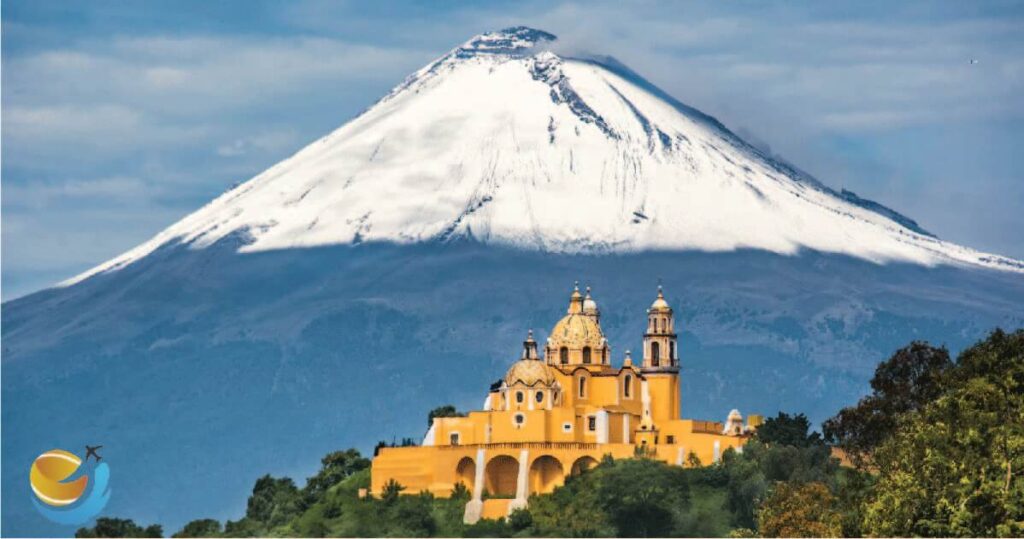
The well-preserved historic centre is a UNESCO World Heritage Site, featuring over 2,600 historical buildings that reflect the city’s rich colonial past.
Historical Importance: Most Beautiful Cities In Mexico
Puebla holds a significant place in Mexican history, particularly due to its role in the Battle of Puebla:
- Battle of Puebla: On May 5, 1862, Mexican forces defeated the French army in the Battle of Puebla, a victory that is celebrated annually as Cinco de Mayo. This battle is a symbol of Mexican resilience and national pride.
- Fuerte de Loreto and Fuerte de Guadalupe: These forts were key sites during the Battle of Puebla. Today, they house museums that provide detailed accounts of the battle and its significance.
Major Landmarks and Attractions: Most Beautiful Cities In Mexico
Puebla’s historic and cultural attractions are numerous, making it a fascinating destination for visitors:
- Puebla Cathedral: Located in the Zócalo, the city’s main square, this cathedral is an architectural masterpiece with its twin bell towers and ornate interiors. It is one of the most significant and beautiful cathedrals in Mexico.
- Biblioteca Palafoxiana: Established in 1646, this is the first public library in the Americas. The library’s collection and the stunning Baroque interior make it a must-visit for history and literature enthusiasts.
- Cholula: Just outside Puebla, the town of Cholula is home to the Great Pyramid of Cholula, the largest pyramid by volume in the world. The pyramid is topped by the beautiful Nuestra Señora de los Remedios church, offering panoramic views of the surrounding area.
Gastronomy: Most Beautiful Cities In Mexico
Puebla is a gastronomic capital, famous for its unique and flavorful cuisine:
- Mole Poblano: This rich and complex sauce, made with a blend of chiles, chocolate, nuts, and spices, is perhaps Puebla’s most famous culinary contribution. It is traditionally served over turkey or chicken.
- Chiles en Nogada: A seasonal dish typically prepared in August and September, chiles en nogada features poblano chiles stuffed with a savory-sweet picadillo, covered with a walnut-based cream sauce, and garnished with pomegranate seeds and parsley to represent the Mexican flag.
- Tacos Árabes: Reflecting the city’s multicultural influences, tacos árabes are made with spiced pork and served in a pita-like bread, showcasing the fusion of Middle Eastern and Mexican flavors.
Cultural Activities and Festivals: Most Beautiful Cities In Mexico
Various festivals and activities enrich Puebla’s vibrant cultural scene throughout the year:
- Cinco de Mayo: The celebration of the Battle of Puebla on May 5th includes parades, reenactments, and cultural events, highlighting the city’s historical significance.
- International Mole Festival: This annual event celebrates Puebla’s famous mole sauce with cooking demonstrations, tastings, and competitions.
- Talavera Pottery Workshops: Puebla is known for its Talavera pottery, a tradition dating back to the 16th century. Visitors can explore workshops and learn about the intricate process of creating these beautiful ceramics.
Puebla’s colonial splendor, historical importance, major landmarks, and culinary delights make it a captivating destination. Its rich cultural heritage and vibrant community offer an immersive experience for travelers seeking to explore the depth and diversity of Mexican culture.
6. Mérida
Yucatecan Culture: Most Beautiful Cities In Mexico
Mérida, the capital of the Yucatán state, is a city where Mayan heritage and colonial history blend seamlessly. Known as the “White City” due to its many white limestone buildings, Mérida is a cultural hub that celebrates its indigenous roots and Spanish colonial past.
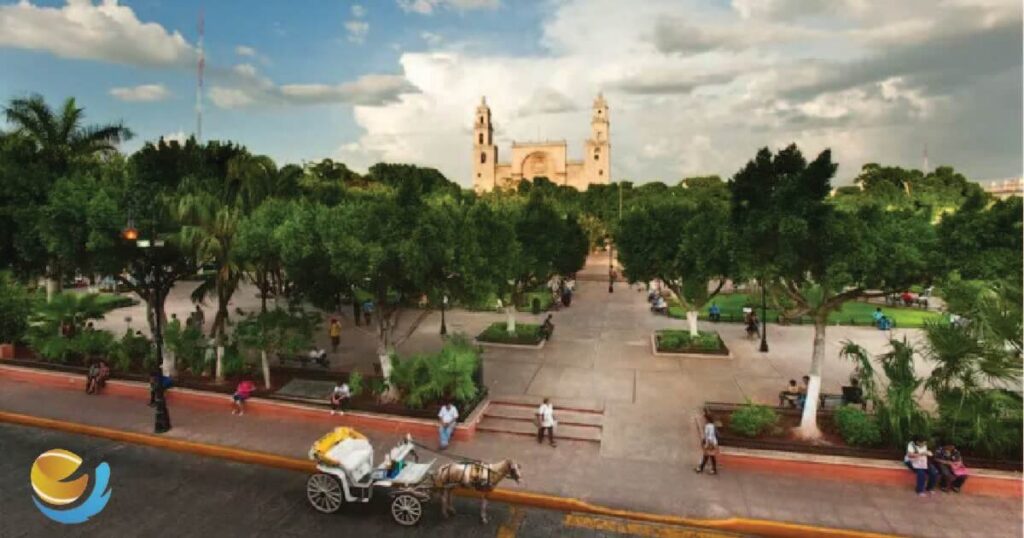
The city serves as a gateway to the rich cultural and natural wonders of the Yucatán Peninsula.
Historic Buildings: Most Beautiful Cities In Mexico
Mérida’s historic center is filled with beautiful colonial buildings, grand plazas, and historic monuments:
- Plaza Grande: The heart of Mérida, this main square is surrounded by significant landmarks such as the Mérida Cathedral, built on the site of a former Mayan temple, and the Casa de Montejo, a 16th-century mansion that now houses a museum.
- Palacio de Gobierno: This government palace features impressive murals depicting the history and culture of the Yucatán. The building itself is a fine example of colonial architecture.
- Teatro Peón Contreras: An elegant theater built in the early 20th century, it hosts a variety of cultural performances including opera, ballet, and symphony concerts.
Cultural Activities: Most Beautiful Cities In Mexico
Mérida is a city rich in cultural activities, where traditional music, dance, and festivals play a vital role in everyday life:
- Jarana Yucateca: This traditional dance is performed in vibrant costumes and is accompanied by live music. Weekly performances can be enjoyed in the streets and public squares.
- Museo Regional de Antropología: Housed in the beautiful Palacio Cantón, this museum offers an extensive collection of Mayan artifacts and exhibits on the region’s history.
- Handicrafts and Markets: The city is famous for its markets, such as Lucas de Gálvez Market, where visitors can purchase traditional Yucatecan handicrafts, textiles, and hammocks.
Natural and Archaeological Sites: Most Beautiful Cities In Mexico
Mérida’s proximity to natural and archaeological wonders makes it an ideal base for exploring the Yucatán Peninsula:
- Chichen Itza: One of the New Seven Wonders of the World, this ancient Mayan city is just a short drive from Mérida. The iconic El Castillo pyramid and the Temple of the Warriors are among its many impressive structures.
- Uxmal: Another significant Mayan archaeological site, Uxmal is known for its well-preserved ruins, including the Pyramid of the Magician and the Governor’s Palace.
- Celestún Biosphere Reserve: A haven for wildlife, this reserve is famous for its pink flamingos and diverse ecosystems. Visitors can take boat tours to explore the mangroves and observe the rich birdlife.
Festivals and Traditions: Most Beautiful Cities In Mexico
Mérida is renowned for its vibrant festivals and cultural traditions that bring the city to life:
- Hanal Pixán: The Yucatecan celebration of Day of the Dead, featuring altars, traditional foods, and vibrant ceremonies honoring deceased loved ones.
- Carnaval de Mérida: This lively annual event features parades, music, dancing, and colorful costumes, reflecting the city’s festive spirit and cultural diversity.
- Noche Mexicana: Held every Saturday night, this event showcases traditional Mexican music, dance, and food, offering a delightful experience for both locals and visitors.
Mérida’s rich Yucatecan culture, historic buildings, cultural activities, and proximity to natural and archaeological sites make it a captivating destination. The city’s vibrant festivals and deep-rooted traditions provide a unique and immersive experience for anyone seeking to explore the cultural heart of the Yucatán Peninsula.
7. Guadalajara
Cultural Hub: Most Beautiful Cities In Mexico
Guadalajara, the capital of Jalisco, is known as the cultural heart of Mexico. The city is famed for its contributions to Mexican culture, including mariachi music, tequila, and the traditional Mexican hat dance, jarabe tapatío. As Mexico’s second-largest city, Guadalajara combines a rich cultural heritage with a modern, vibrant atmosphere.
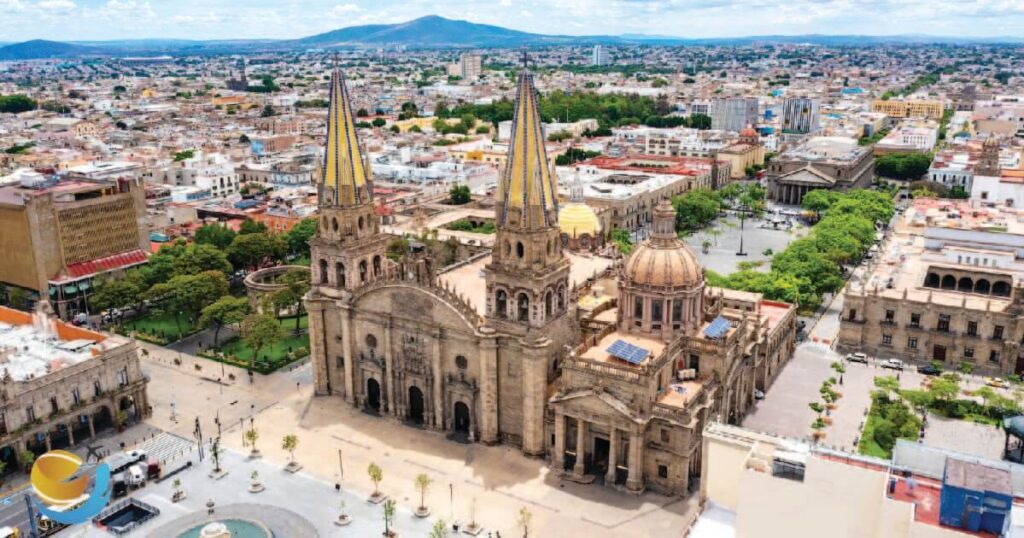
Major Landmarks and Attractions: Most Beautiful Cities In Mexico
Guadalajara boasts numerous landmarks that highlight its historical and cultural significance:
- Guadalajara Cathedral: This iconic cathedral, with its distinctive twin spires, is located in the heart of the city. Its stunning interior features beautiful altars, paintings, and stained-glass windows.
- Hospicio Cabañas: A UNESCO World Heritage Site, this neoclassical building was originally a hospital and orphanage. Today, it houses the Instituto Cultural Cabañas and is renowned for its frescoes by José Clemente Orozco, one of Mexico’s greatest muralists.
- Teatro Degollado: An architectural gem, this 19th-century neoclassical theater hosts performances of opera, ballet, and concerts. The theater’s stunning interior is decorated with intricate frescoes and gold leaf.
Modern Attractions: Most Beautiful Cities In Mexico
In addition to its historical sites, Guadalajara offers a range of modern attractions that reflect its dynamic cultural scene:
- Tlaquepaque: This vibrant neighborhood is known for its artisan shops, galleries, and traditional restaurants. Visitors can enjoy mariachi performances in the charming El Parián square.
- Zapopan: A bustling area within the metropolitan region, Zapopan is home to the Basilica of Our Lady of Zapopan, a major pilgrimage site, and the modern Andares shopping center, offering a blend of tradition and contemporary lifestyle.
- Museo de las Artes (MUSA): Part of the University of Guadalajara, this museum showcases contemporary art exhibitions and also features murals by José Clemente Orozco.
Festivals: Most Beautiful Cities In Mexico
Guadalajara is renowned for its lively festivals that celebrate the city’s rich cultural heritage:
- Guadalajara International Film Festival (FICG): One of Latin America’s most prestigious film festivals, FICG attracts filmmakers, actors, and cinephiles from around the world, showcasing a diverse range of international and Mexican films.
- International Mariachi and Charrería Festival: This annual festival celebrates the traditions of mariachi music and charrería (Mexican rodeo). It features concerts, parades, and competitions, drawing visitors from across the globe.
- Guadalajara International Book Fair (FIL): The largest book fair in the Spanish-speaking world, FIL brings together authors, publishers, and readers for a week of literary events, discussions, and book signings.
Gastronomy: Most Beautiful Cities In Mexico
Guadalajara’s culinary scene is a vibrant mix of traditional and modern flavors:
- Tequila: As the birthplace of tequila, Guadalajara is the gateway to the Tequila Trail, where visitors can tour distilleries and learn about the production process of this iconic Mexican spirit.
- Birria: A traditional dish from Jalisco, birria is a savory stew made with marinated meat, often goat or beef, cooked slowly and served with tortillas and a variety of condiments.
- Torta Ahogada: This popular local sandwich features a crusty roll filled with pork and smothered in a spicy tomato sauce, often accompanied by onions and lime.
Music and Nightlife: Most Beautiful Cities In Mexico
Guadalajara’s music scene is as vibrant as its cultural offerings:
- Mariachi Music: Guadalajara is the birthplace of mariachi, and visitors can enjoy live performances in many plazas and restaurants, especially in the iconic Plaza de los Mariachis.
- Nightlife: The city offers a lively nightlife with numerous bars, clubs, and live music venues, particularly in areas like Chapultepec Avenue and Andares.
Guadalajara’s rich cultural hub, historical landmarks, modern attractions, lively festivals, and vibrant culinary and music scenes make it a must-visit destination for anyone looking to experience the best of Mexican culture. The city’s dynamic blend of tradition and innovation offers a unique and enriching experience for travelers.
8. Tulum
Natural Beauty: Most Beautiful Cities In Mexico
Tulum, located on the Caribbean coast of the Yucatán Peninsula, is renowned for its stunning natural beauty. The city offers a perfect blend of pristine beaches, crystal-clear turquoise waters, and lush jungle landscapes. Tulum’s tranquil and picturesque setting makes it a popular destination for those seeking relaxation and adventure in an idyllic environment.
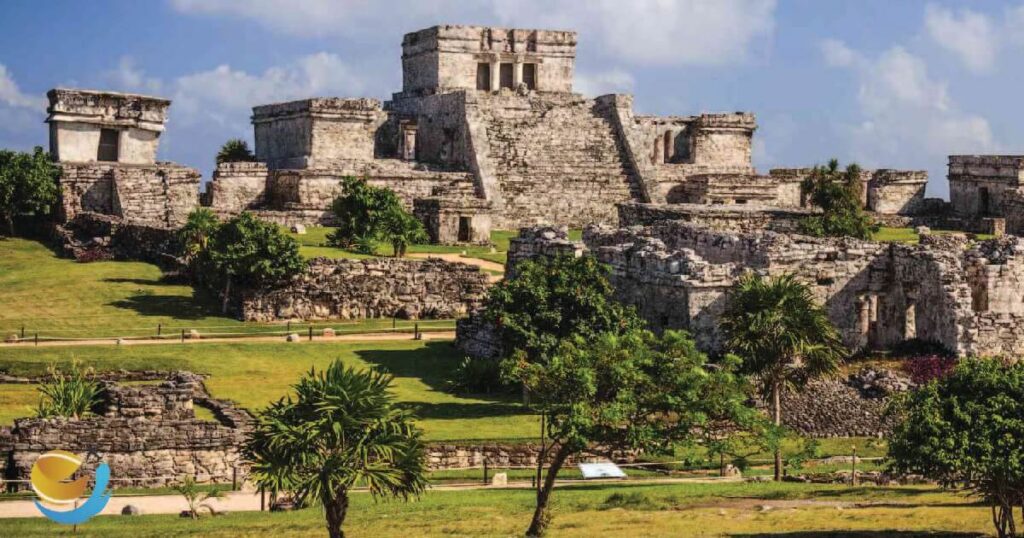
Archaeological Sites: Most Beautiful Cities In Mexico
Tulum is home to some of the most remarkable and well-preserved Mayan ruins, which are uniquely situated along the coastline:
- Tulum Ruins: Perched on a cliff overlooking the Caribbean Sea, the Tulum archaeological site is one of the most iconic and scenic ancient Mayan cities. The ruins offer a fascinating glimpse into Mayan history and stunning views of the ocean.
- Cobá: Located a short drive from Tulum, Cobá is another significant Mayan archaeological site. Unlike Tulum, Cobá is nestled in the jungle and features the tallest pyramid in the Yucatán Peninsula, Nohoch Mul, which visitors can climb for panoramic views of the surrounding area.
Eco-Tourism: Most Beautiful Cities In Mexico
Tulum is at the forefront of eco-tourism, promoting sustainable travel practices and environmental conservation:
- Eco-Friendly Accommodations: Many of Tulum’s hotels and resorts are committed to sustainability, offering eco-friendly amenities and practices. Accommodations range from luxurious eco-resorts to rustic, off-the-grid cabanas.
- Cenotes: The area around Tulum is dotted with cenotes, natural sinkholes filled with fresh water. These cenotes, such as Gran Cenote, Dos Ojos, and Cenote Calavera, provide unique opportunities for swimming, snorkeling, and diving in a surreal and otherworldly setting.
- Sian Ka’an Biosphere Reserve: A UNESCO World Heritage Site, this expansive reserve encompasses diverse ecosystems, including tropical forests, mangroves, and coral reefs. Visitors can take guided tours to explore the rich biodiversity, including various bird species, marine life, and endangered animals.
Beach and Water Activities: Most Beautiful Cities In Mexico
Tulum’s beautiful beaches and coastal waters offer a wide range of recreational activities:
- Beach Relaxation: Tulum’s beaches, such as Playa Paraiso and Playa Ruinas, are known for their soft white sand and clear blue waters, providing a perfect setting for sunbathing, swimming, and beachcombing.
- Snorkeling and Diving: The nearby Mesoamerican Barrier Reef, the second-largest coral reef system in the world, offers excellent opportunities for snorkeling and diving. Visitors can explore vibrant coral formations, underwater caves, and a rich diversity of marine life.
- Kitesurfing and Paddleboarding: The steady winds and calm waters of Tulum make it an ideal location for kitesurfing and paddleboarding, with several local operators offering lessons and equipment rentals.
Wellness and Lifestyle: Most Beautiful Cities In Mexico
Tulum has become a hub for wellness and holistic lifestyle experiences, attracting health-conscious travelers from around the world:
- Yoga and Wellness Retreats: Tulum is home to numerous yoga studios and wellness centers that offer classes, retreats, and workshops focused on physical and mental well-being. Many beachfront resorts and eco-lodges provide yoga sessions in serene, natural settings.
- Healthy Cuisine: The culinary scene in Tulum emphasizes fresh, organic, and locally sourced ingredients. Many restaurants offer a range of healthy options, including vegetarian, vegan, and gluten-free dishes, along with traditional Mexican cuisine.
Nightlife and Culture: Most Beautiful Cities In Mexico
Despite its laid-back atmosphere, Tulum also offers a vibrant nightlife and cultural scene:
- Beach Clubs and Bars: Tulum’s beach clubs and bars, such as Papaya Playa Project and Gitano, are known for their relaxed yet lively atmosphere, featuring live music, DJ sets, and beachfront parties.
- Art and Culture: The city’s artistic community is thriving, with numerous galleries, boutiques, and cultural events that showcase local and international artists. The annual Art With Me festival combines art, music, and wellness, creating a unique cultural experience.
Tulum’s natural beauty, archaeological sites, eco-tourism, beach and water activities, wellness focus, and vibrant cultural scene make it an exceptional destination. Whether seeking adventure, relaxation, or holistic wellness, visitors to Tulum will find a unique and unforgettable experience in this tropical paradise.
Conclusion Of Most Beautiful Cities In Mexico:
In summary, Mexico’s cities offer a rich tapestry of culture, history, and natural beauty. From the colonial charm of San Miguel de Allende to the beach paradise of Tulum, each city has its own unique allure.
Whether exploring ancient ruins, indulging in delicious cuisine, or relaxing on stunning beaches, visitors are sure to be captivated by the beauty and diversity of Mexico’s most enchanting cities.
Related Articles:
How To Get To Bimini: Complete Guide
Best Time to Visit Havasu Falls: Complete Guide For Beginners

